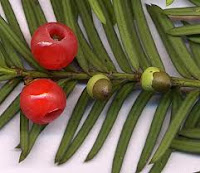RAMBUTAN, NEPHELIUM LAPPACEAE
Rambutans look and taste like large juicy lychees, although they come in a hairy or spiny outer case, which is how they got their name; from a Malay word, rambut which means hair. The tree is a member of the Sapindaceae of which reetha, or the soapnut tree (Sapindus mukorossi) is a member. Synonyms for the rambutan tree are Euphoria nephelium DC and Dimocarpus crinita Lour.
It is a large evergreen tree that can reach heights of between 15 – 25 metres (50 to 80 feet).It bears fruits every alternate year and has long leaves (10-30 cm) which consist of 3-11 leaflets. It is a native of South East Asia where it is now cultivated, but the fruits are rarely exported. It is also cultivated in Ecuador, Colombia, Honduras, Costa Rica, Trinidad and Cuba as well as in Australia.
They like humidity and a well-distributed rainfall, which is why, I suppose they have the name Nephelium. In Greek mythology, Nefeli or Nephele was a nymph married to Athamantia, lord of Boetia, which was the central part of the Greek mainland, and she had two children, Frixus and Ellie. Alternatively she was shaped from clouds by Zeus into the form of his wife, the goddess Hera. She had complained to Zeus that King Ixion had attempted to rape her, and to test the truth of her story Zeus made the cloud woman, Nephele, and sent her to the king, who raped her. She conceived and gave birth to the Centauri, the tribe of centaurs, during a rain storm on Mount Pelion. Either way, Nephele has the association with rain and clouds.
 The rambutan was introduced into the Philippines in 1912 from Indonesia and again introduced in the 1930s and then more plants were exported from Malaysia. They were introduced into the US too, but are not grown there.
The rambutan was introduced into the Philippines in 1912 from Indonesia and again introduced in the 1930s and then more plants were exported from Malaysia. They were introduced into the US too, but are not grown there. Normally people eat the fruit raw, but they can be stewed and made into jams too. They are also used in traditional medicine, for a number of ailments. A decoction can be made from the bark of the tree and used to get rid of thrush or candida. Internal worms can be removed with a decoction made from the roots it is said. The leaves are made into a poultice and applied to the forehead, to relieve headaches, and a decoction of the dried skin, which contains tannins, is used for dysentery and diarrhoea. The seeds are said to be toxic and so should not be eaten raw, although they are OK roasted and are used in the treatment of diabetes. The leaves can be dried and made into a paste with a little water and this can be used on the scalp and hair to condition it. The dried skin is also used for fevers and is sold in markets in Malaysia.
 The fruit may help in a weight loss diet and may also help to lower blood pressure. Eating the fruit is also supposed to help you have softer skin and to improve its health.
The fruit may help in a weight loss diet and may also help to lower blood pressure. Eating the fruit is also supposed to help you have softer skin and to improve its health. The young shoots from the tree can be used to produce a green dye on silk which has already been dyed yellow with turmeric (haldi), while the fruit produces a black dye for silk. The seed oil, which looks like cacao butter, can be used to make candles and soap.
Rambutans are high in vitamin C and eating ten of them will give you twice as much of his as is recommended for your daily diet. It also contains niacin B1 and traces of the vitamin A. It also contains the minerals, iron, phosphorous and calcium.
Ingredients
10 rambutans, skin and stone removed
2 kiwi fruit, peeled
1 small ripe pineapple,
250 gr strawberries, hulled
1 bunch black grapes,
orange liqueur
Method
Slice the pineapple at 2 inches from the top and use a sharp knife to remove the flesh. Keep the shell to put the fruit in. Chop the pineapple into bite sized chunks.
Slice the kiwi fruit.
Put the fruit (not the grapes) into a bowl and pour orange liqueur over them- don’t overdo it!
Leave the bowl, covered in the fridge tossing the fruit in the liqueur every so often to make sure it is coated.
Put the fruit in the pineapple shell and serve.
This has Taste and is a Treat.






















